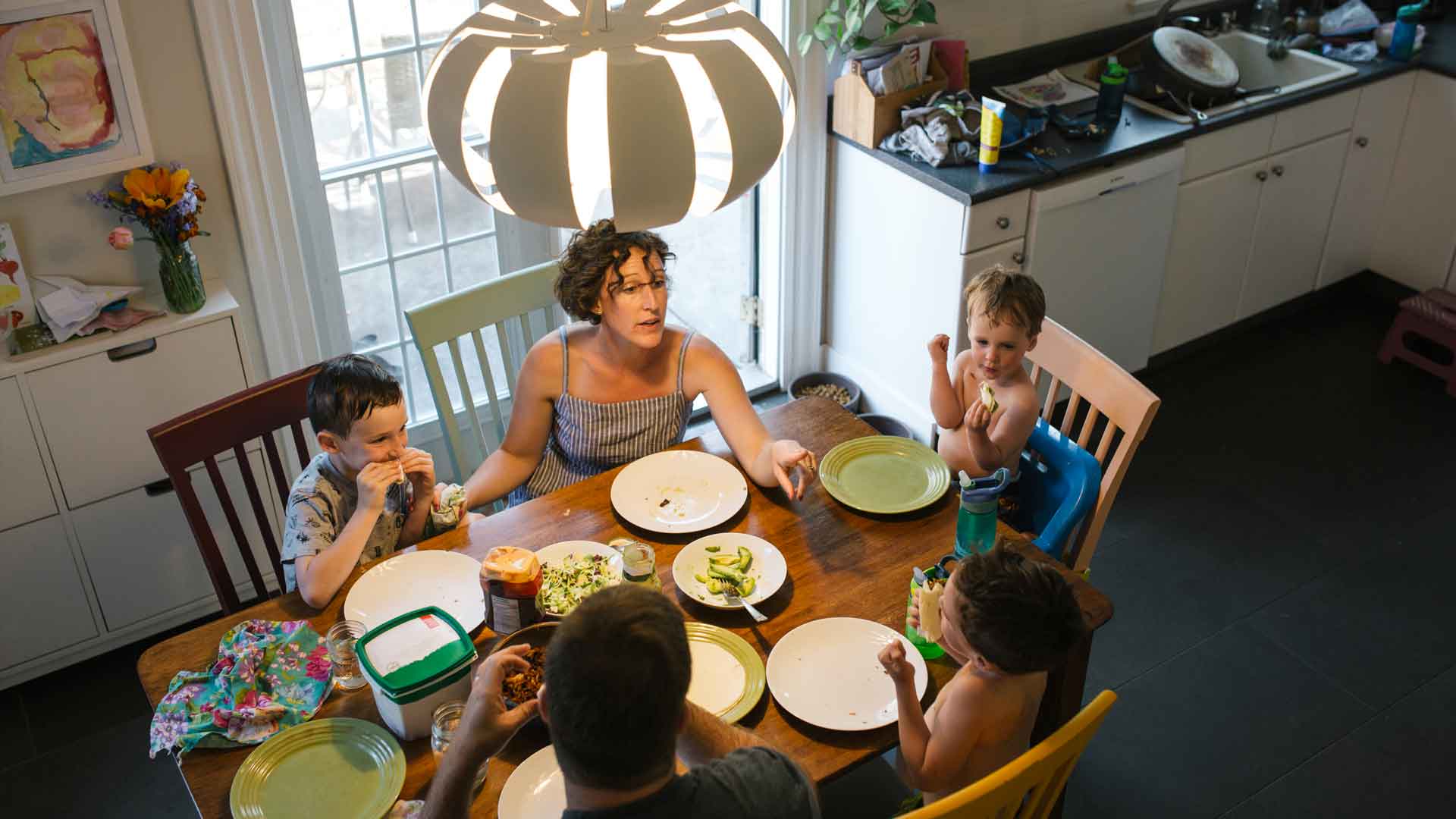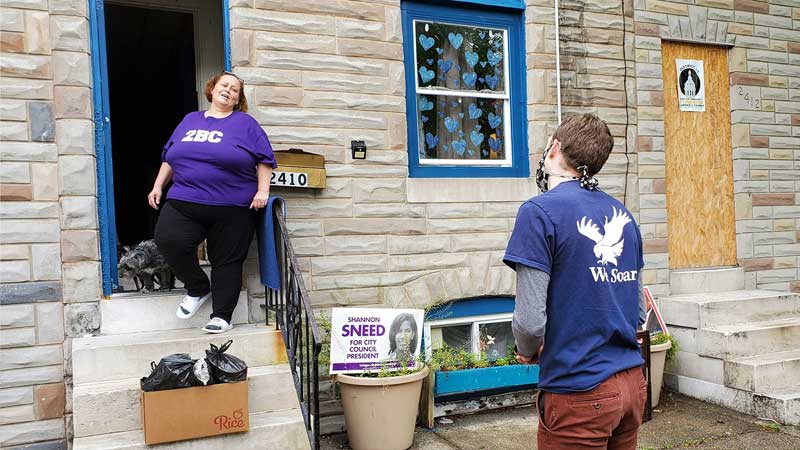New MFB Research Paints More Complete Picture of Food Insecurity

While we continue to expand food access and create pathways out of hunger for more Marylanders, we realize that the better our data is, the better the outcomes will be for our food insecure neighbors.
That’s why we’re relieved that over the past two years, there has been broader acknowledgement of the fact that the issues of wages, housing, and food are inextricably linked.
And it is that very data that will lead the way going forward.
“Food insecurity is complex. It’s a multifaceted story that requires analysis of multiple measures of need, something scholars, policy researchers, and food bankers have long emphasized,” said MFB’s Chief Strategy Officer Meg Kimmel. “The fact that there are not readily available, national metrics to measure improved food-insecurity outcomes is a problem that needs to be solved.”
Researched and written by MFB’s Vice President for Learning, Measurement, and Evaluation, Daniel Sturm, our latest original research titled “Food Insecurity in Maryland” takes a step forward by analyzing recent data to more accurately show how hardship (such as job loss, high cost of childcare, inflated retail costs, etc.) can lead to food insecurity, and chip away at Marylanders’ ability to thrive. In short: our new report takes a holistic approach to presenting the drivers of food insecurity.
“We’ve never had a resource like this because previous research didn’t adequately measure current levels of need; it left out many Marylanders and their families with above-poverty incomes who are unable to make ends meet. By providing this comprehensive approach to evaluating and addressing food insecurity, we can maximize the reach and impact of organizations like the Maryland Food Bank.”
Food Insecurity Forces Tough Choices
Studies like the United Way of Central Maryland’s ALICE Report, which bring the true cost of living to the forefront, clearly show that families with incomes well above the Federal Poverty Level may be at risk of experiencing food insecurity.
In this new report, our research team theorizes that “families frequently adopt coping strategies which carry high cost and risk. They may decide to put off paying for rent or utilities, struggle to get out of debt, or face eviction.”
We’ve heard this countless times over the decades, including from Randy, who Faced tough choices after losing his job on the Eastern Shore.
“When I drove a truck full time, I wasn’t rich, but I didn’t really think about bills or food too much, and when that went away, it hit me really hard… it was like a game — how many days can I let the electric bill slide before they really turn it off? Who wants to live like that?” he said.

The Complex Layers of Food Insecurity
Anecdotally, we’ve long known that food insecurity does not generally “happen”; rather it is the slow-building manifestation of difficult, underlying issues. These factors, such as lack of financial resources, childcare, and transportation challenges, are what the food bank calls “root causes,” and we’ve designed MFB 3.0, our strategic plan, in a way that actively addresses them.
Our new report explores nine factors that contribute to food insecurity, providing detailed statistical analysis and discussions of emerging trends. It begins by noting the increased demand for food assistance before highlighting several key drivers for the surge – financial security, food affordability, and the correlation of housing and food insecurity.
Food Assistance Trends
Based on MFB’s analysis of 2-1-1 Maryland caller data, MFB pantry visit statistics, and Google Trends data, the number of Marylanders relying on MFB’s network of food assistance partners increased by 30% Between March and May 2022.
At Pantry on the Go, Mobile Market, and other food distribution events, neighbors are sharing similar stories — of feeling that the rising costs of food, gas, and other items were outpacing their ability to find solutions on their own.
“I’ve felt privileged with these opportunities from the Maryland Food Bank to have a lot of good, healthy foods like fresh vegetables and fruits, even quality meats. Even if I could afford the high, high prices, my market doesn’t even have the good kinds of food like I got here!”
Financial Security
With help from the U.S. Census Bureau, which created the Household Pulse Survey at the onset of the pandemic, we’ve been able to collect real-time data on how people’s lives have been impacted by COVID-19. The scope and depth of this analysis has been pivotal to MFB research over the last year, including in this latest report.
As part of the study, our research team analyzed June 2022 data from the U.S. Census Bureau’s Maryland Household Pulse Survey and found that “the percentage of Marylanders who were finding it difficult to cover basic household expenses rose from nearly 8% in December 2021 to 32% in June 2022.”
This is traced back to the early days of the pandemic, when low-income Americans faced the most adverse economic impacts of the pandemic. The expiration of certain pandemic relief efforts only made things worse.
“I used to pay bills, because I didn’t want to fall behind in anything,” said Tina D. from Owings Mills, Md. “So, the good thing is my rent was always on time, but it means I couldn’t do anything else, even regular things like go to any grocery store I wanted to!”
Food Affordability
According to “Food Insecurity in Maryland,” the same Household Pulse Survey noted that nearly 50% of Maryland families said that their children were sometimes or often not eating enough because food was not affordable in June 2022. This is especially troubling when you consider that we know the negative effects of poor nutrition on children, and this is another barrier for kids who were just emerging from two challenging years of pandemic-altered education and socialization.
Yet this is a common refrain among many of the neighbors who visit one of our 300 statewide Network Partners, like the Langston Hughes Community Center in northeast Baltimore.
“I went to buy sweet potatoes at the store, which my kids LOVE, and when they said it cost $9 for only three of them, I had to put them back,” Harriet E explained. “I am thankful that the food bank and Langston Hughes are here for me with this food, which helps my family money situation.”
Housing and Food Insecurity
For many of our neighbors, the balancing act between immediate needs like food and longer-term needs like housing is an ongoing crisis. Researchers have found that the relationship between food insecurity and housing are highly correlated over time: People with a higher risk of housing instability are more likely to be food insecure, and vice versa.
Our research team investigated this association for MFB’s service area as part of the food bank’s new report and realized the concerning trend that 14% of renters in Maryland were behind on rent in May 2022; 50% of the households that have fallen behind on rent are considered unemployed and 82% are low-income.
Choosing between paying rent or buying food can be one of the most significant “tough choices” that some of our neighbors are forced to make.

Pandemic Lessons Prescribe Future Efforts
This “Food Insecurity in Maryland” research report is another step in our continued efforts to better understand how these the underlying factors, or “root causes” manifest as food insecurity in Marylanders’ lives.
And the more we know, the better we can assess individual communities, and apply the right resources in the right place, at the right time to address these factors head on, resulting in the greatest impact on food insecure Marylanders.
Our research team is constantly monitoring the hunger landscape in Maryland, and we appreciate your interest in finding out more the true nature of hunger in our state. As the team works on the next report, we invite you to read the Food Insecurity in Maryland report in its entirety.
Get updates on our progress in the fight against hunger
Want to see how your involvement directly impacts the well-being of your neighbors in need? Get the latest news sent to your inbox.







